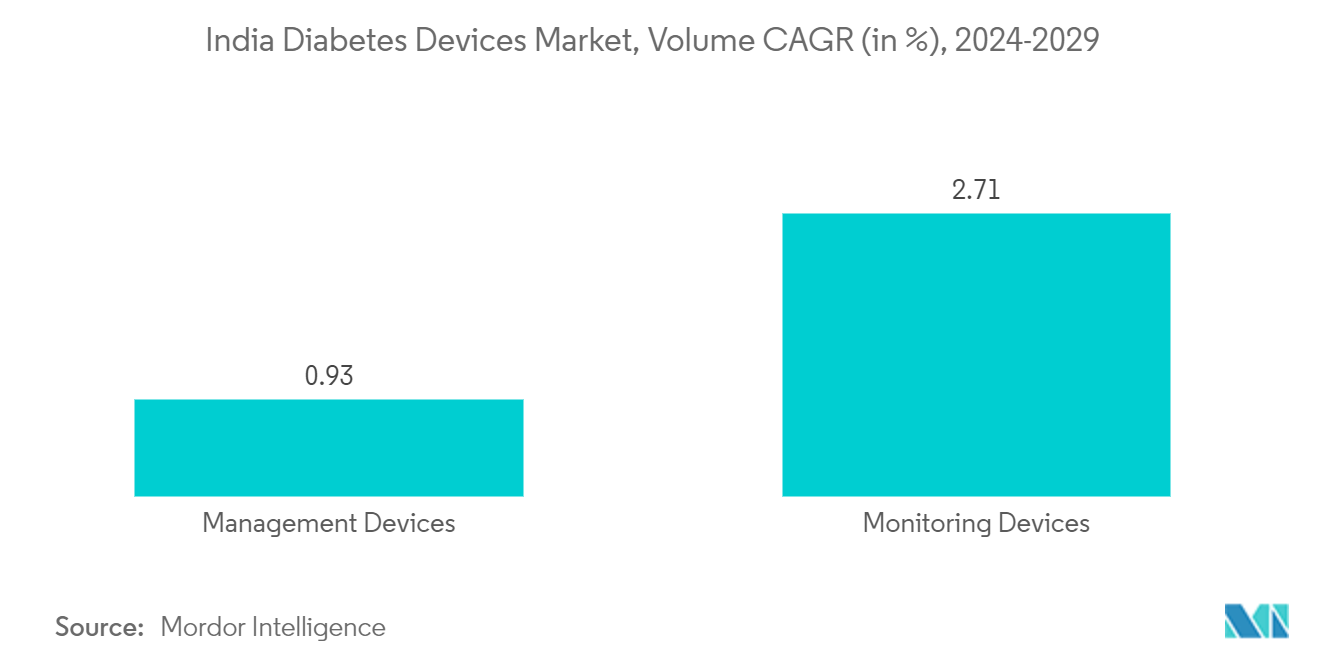Market Trends of India Diabetes Devices Industry
Increasing use of monitoring devices in India
In India, the monitoring devices segment is expected to increase with a CAGR of over 7% during the forecast period, mainly due to the demand from the Type-1 diabetes population, which was more than 9 million by the end of the forecast period.
Monitoring devices include self-monitoring blood glucose (SMBG) and continuous glucose monitoring devices (CGM). The SMBG segment held a major share of the Indian diabetes devices market and generated revenue of USD 130.53 million in the current year. The frequency of monitoring glucose levels depends on the type of diabetes, which varies from patient to patient. The awareness of self-monitoring of glucose levels has increased widely in India, and the market for monitoring devices is expected to register high growth in the country with a CAGR of 10% during the forecast period. Type-1 diabetic patients need to check their blood glucose levels at regular intervals to adjust their insulin dosing accordingly.
The current CGM devices reduce finger pricking for measuring blood glucose levels. It shows a more detailed representation of blood glucose patterns and tendencies than can be achieved by conventional routine checking of glucose levels at set intervals.
Thus, owing to the above factors, it is expected to drive market growth over the forecast period.

India recorded the second-highest diabetes population in Asia-Pacific
In India, there are currently 80.52 million people suffering from diabetes, and by 2027, nearly 10% of India's population is likely to be affected by diabetes. Obesity, especially central obesity, increased visceral fat due to physical inactivity, and consumption of high-calorie, high-fat, and high-sugar diets are the major contributing factors to diabetes in Indians. The most prominent work culture perpetuated in the country, which includes sitting for hours in one position and eating fast food with little or no physical activity, is a significant contributor to diabetes in the working-age group, causing this rapid increase in diabetes cases in India.
In India, the International Diabetes Federation (IDF) estimates that 10% of global health expenditure is spent on diabetes. According to the Ministry of Health and Family Welfare of the Government of India, out of all deaths in India, 60% are related to non-communicable diseases (NCDs). Non-communicable diseases like diabetes, cardiovascular diseases, cancer, chronic respiratory diseases, etc. In order to prevent and control major NCDs, the National Program for Prevention and Control of Cancer, Diabetes, Cardiovascular Diseases, and Stroke (NPCDCS) includes medical education, health awareness in schools, and urban planning for diabetes.
Thus, owing to the above factors, it is expected to drive market growth over the forecast period.


